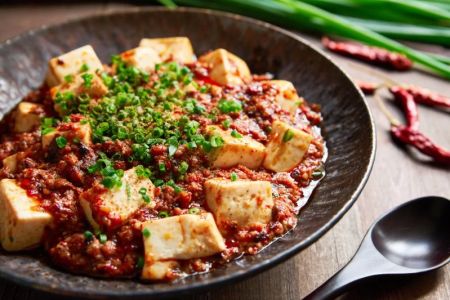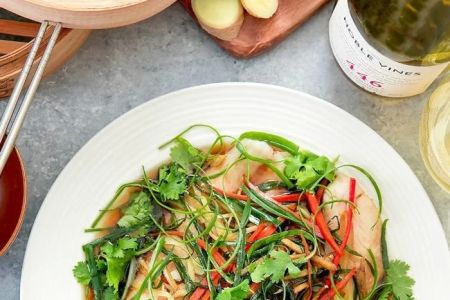- #black-bean-sauce-role-umami-rich-flavor - overview - kitchen-uses
- #basics-and-history-black-bean-sauce - what-is-douchi - buying-and-storing
- #flavor-science - umami-chemistry - balance
- #classic-dishes-and-techniques - stir-fry - steaming
- #home-cook-playbook - 10-minute-formula - make-ahead
- #regional-and-restaurant-perspectives - cantonese-heritage - modern-dining
- #health-and-nutrition - sodium-awareness - plant-based-umami
- #troubleshooting-and-pro-tips - fix-salty - keep-sauce-silky
- #faq - storage - substitutions
- #shop-recommendations - black-bean-sauce - cookware
The Role of Black Bean Sauce in Chinese Cooking: Umami-Rich Flavor
When cooks talk about depth, they usually mean umami—that savory backbone you feel on the sides of your tongue. Few condiments deliver it as reliably as black bean sauce. This guide explores The Role of Black Bean Sauce in Chinese Cooking: Umami-Rich and Flavorful by showing how it amplifies aroma, rounds sharp edges, and creates that restaurant-level gloss at home. Along the way you’ll learn how to choose the right product, balance flavors like a pro, and adapt classic techniques to your weeknight kitchen.
Basics and background
What black bean sauce is (and what it isn’t)
Black bean sauce is built on douchi—salt-cured, fermented black soybeans. On their own, these beans are intensely savory and a little bitter; in sauce form they’re blended with aromatics (often garlic and ginger), oil, and seasonings. Don’t confuse black bean sauce with sweetened black bean paste used in desserts or with chili bean pastes like doubanjiang; they live in different parts of the pantry and taste completely different.
Flavor profile and kitchen logic
Think of it as a three-note chord: deep umami from fermentation, salinity from curing, and a roasted, nutty warmth that blooms when heated. Because it’s concentrated, a tablespoon can transform a pan sauce, push a stir-fry past “tasty” into “craveable,” and make steamed dishes taste bigger than the sum of their parts.
Buying and storing
Two forms matter for home cooks: whole fermented beans (for maximum control) and ready-to-use black bean garlic sauces (for speed). Store opened jars tightly sealed in the refrigerator; whole beans keep well in an airtight jar. Before cooking, rinse whole beans briefly to moderate saltiness, then mash with a little oil or water.
Why it tastes so good
Umami chemistry in plain language
Fermentation breaks down soy proteins into glutamates and nucleotides, which your taste buds read as savory depth. Oil carries fat-soluble aromas; heat unlocks roasted notes. Add a little sugar, and you tame bitterness without losing character. A splash of acid (rice vinegar, Shaoxing wine) lifts the finish so the sauce tastes alive, not heavy.
Balancing the bowl
Great Chinese sauces ride a balance: salt + sweet + acid + heat + aroma. For black bean sauce, that often means pairing a salty spoonful with a touch of sugar, a dash of rice vinegar or wine, gentle chili heat, and fresh aromatics. When the balance is right, you’ll notice clarity of flavor and a glossy, clingy texture on ingredients.
Classics and how to execute them
Stir-fry technique: beef with black bean
Velvet thin-sliced beef with a quick marinade (soy sauce, Shaoxing wine, a pinch of sugar, and a little cornstarch). Flash-sear, remove, then build your sauce: sauté garlic, ginger, and a spoon of mashed black beans; deglaze with stock and wine; return beef with bell peppers or scallions; thicken lightly. The sauce should coat, not pool.
Seafood synergy: clams or fish
Shellfish love saline companions. Steam clams with garlic, ginger, and black bean sauce; finish with a drizzle of hot oil and scallions. For fish, spoon a thin black bean mixture over fillets and steam until just done—the sauce perfumes the steam and seasons from the outside in.
Steamed comfort: spareribs and eggplant
Small-cut pork ribs marinated with garlic, black beans, and a touch of sugar deliver a soft, sticky, deeply savory dish. Eggplant becomes silky when tossed with the same trio, then steamed or braised; the sauce seeps in without turning greasy.
Your weeknight playbook
A 10-minute skillet formula
Use this on shrimp, tofu, chicken, or mushrooms.
- Preheat pan until just smoking; add oil.
- Sear main ingredient to 80% doneness; remove.
- Add minced garlic and ginger; stir 10 seconds.
- Stir in 1 tbsp black bean sauce, 1 tsp sugar, 2 tbsp stock, 1 tsp rice vinegar.
- Return main ingredient with vegetables; reduce until glossy. Finish with scallions.
Make-ahead master sauce
Simmer stock with mashed fermented beans, a slice of ginger, a garlic clove, a pinch of sugar, and a splash of Shaoxing wine. Chill. During the week, add a few spoonfuls to stir-fries or noodles; it’s a reliable flavor “booster pack.”
Vegetarian and vegan ideas
Pair black bean sauce with firm tofu, king oyster mushrooms, or blistered green beans. A small knob of butter (or plant-based fat) stirred in off heat gives the sauce restaurant-style silkiness without heavy cream.
Regional roots and modern dining
Cantonese heritage, global table
Black bean sauce is a Cantonese staple, but its appeal went global because it solves a universal cook’s problem: how to add depth quickly. Many restaurants keep both whole fermented beans for bespoke dishes and ready sauces for speed during service—proof that convenience and craft can coexist.
How chefs build layers
In professional kitchens, cooks “temper” aromatics in oil, bloom the black bean paste, then add liquids to capture browned bits. A quick cornstarch slurry tightens the glaze so flavors adhere to meat or vegetables instead of slipping to the plate.
Nutrition notes that matter
Sodium awareness
Because fermented beans are salt-cured, start small, taste, and adjust. Rinsing whole beans lightly and adding unsalted stock helps you hit a flavorful but sensible sodium level.
Plant-based umami, minimal fuss
Black bean sauce offers a meatless pathway to satisfying savory depth. Use it to reduce reliance on heavy meat stocks while keeping dishes bold and complete.
Troubleshooting and pro tips
“Too salty”
Extend the sauce with unsalted stock, add a pinch of sugar, and brighten with rice vinegar. For future cooks, rinse whole beans briefly and measure by the teaspoon.
“Tastes flat”
Add acidity (vinegar or wine) and a quick hit of fresh aromatics. A short simmer concentrates flavor; over-reduction can turn bitter, so keep heat moderate.
“Sauce isn’t glossy”
Whisk a small cornstarch slurry into simmering liquid and finish with a teaspoon of oil or butter off heat for sheen without gumminess.
Quick answers to common questions
Can I substitute other sauces?
Chili bean pastes and oyster sauce provide different flavor directions. If you must substitute, combine a mild miso with garlic and a touch of soy; it won’t be identical, but it preserves the savory backbone.
Whole beans vs. jarred sauce?
Whole beans offer control and intensity; jarred sauces are fast and consistent. Many cooks keep both and choose based on time and precision needed.
How long does it keep?
Opened jars keep well in the refrigerator when sealed properly. Use clean utensils to avoid contamination and preserve flavor.
Where to find good products and tools
Choosing the right black bean sauce
Look for short ingredient lists and clear bean aroma. If you prefer lighter garlic notes, choose plain black bean sauces; if you love pungency, pick black bean garlic styles. For whole beans, select plump, slightly wrinkled douchi that smell savory, not acrid.
Helpful cookware
A responsive wok or skillet, a small saucepan for master sauces, and heat-proof spatulas make all the difference. For curated sauces, fermented beans, and cookware, visit Chinese Food to discover products that match your cooking style and budget.







